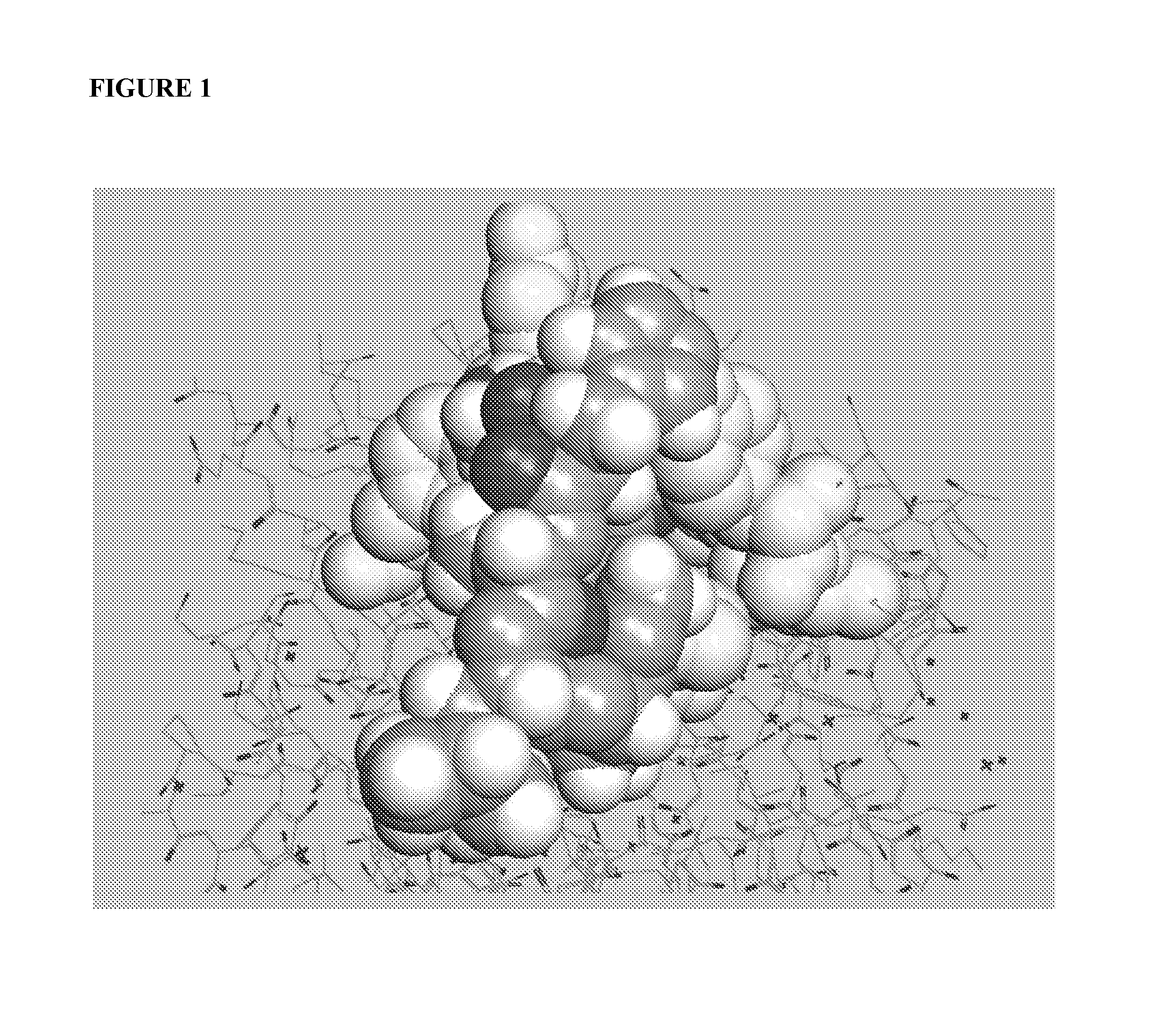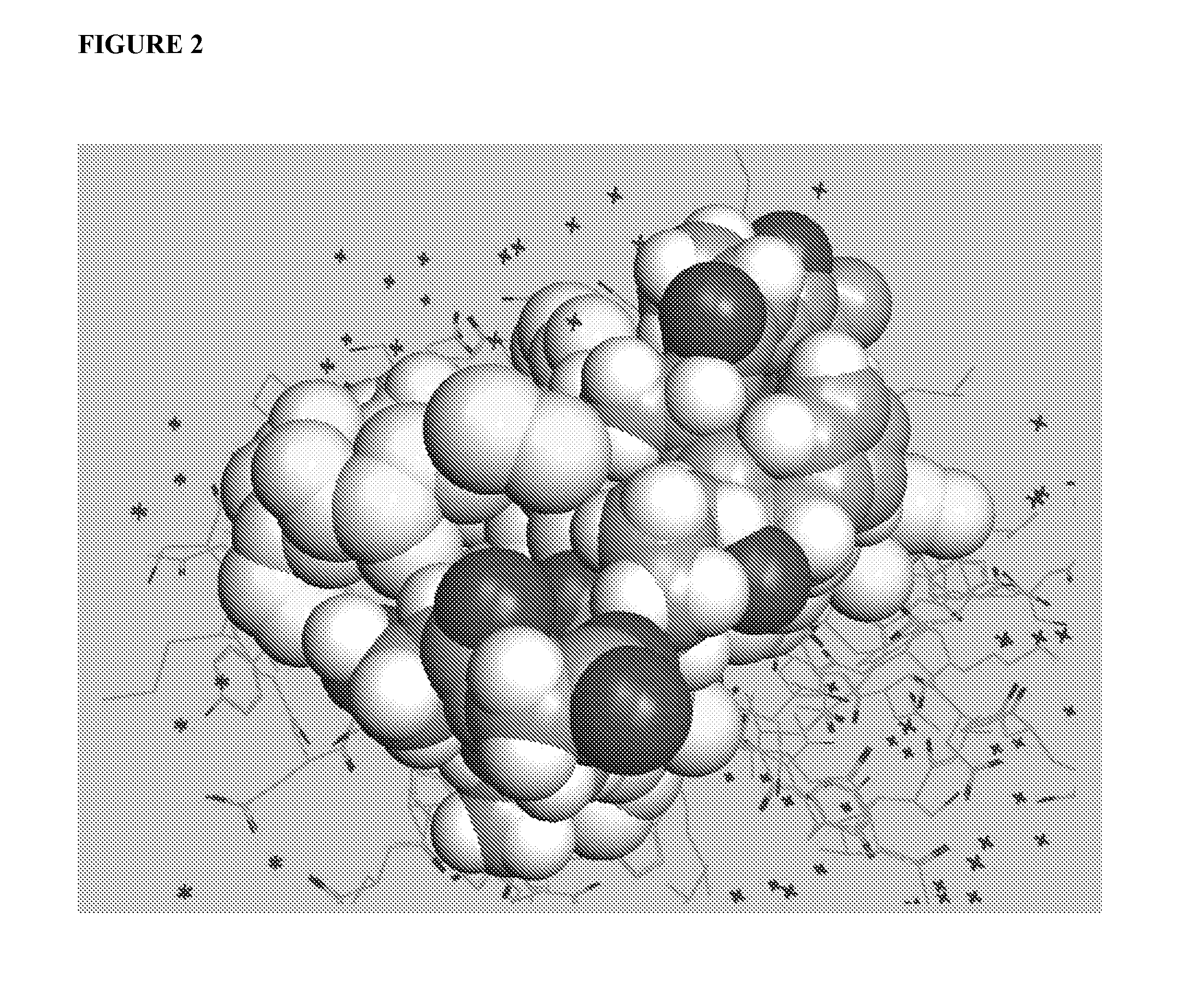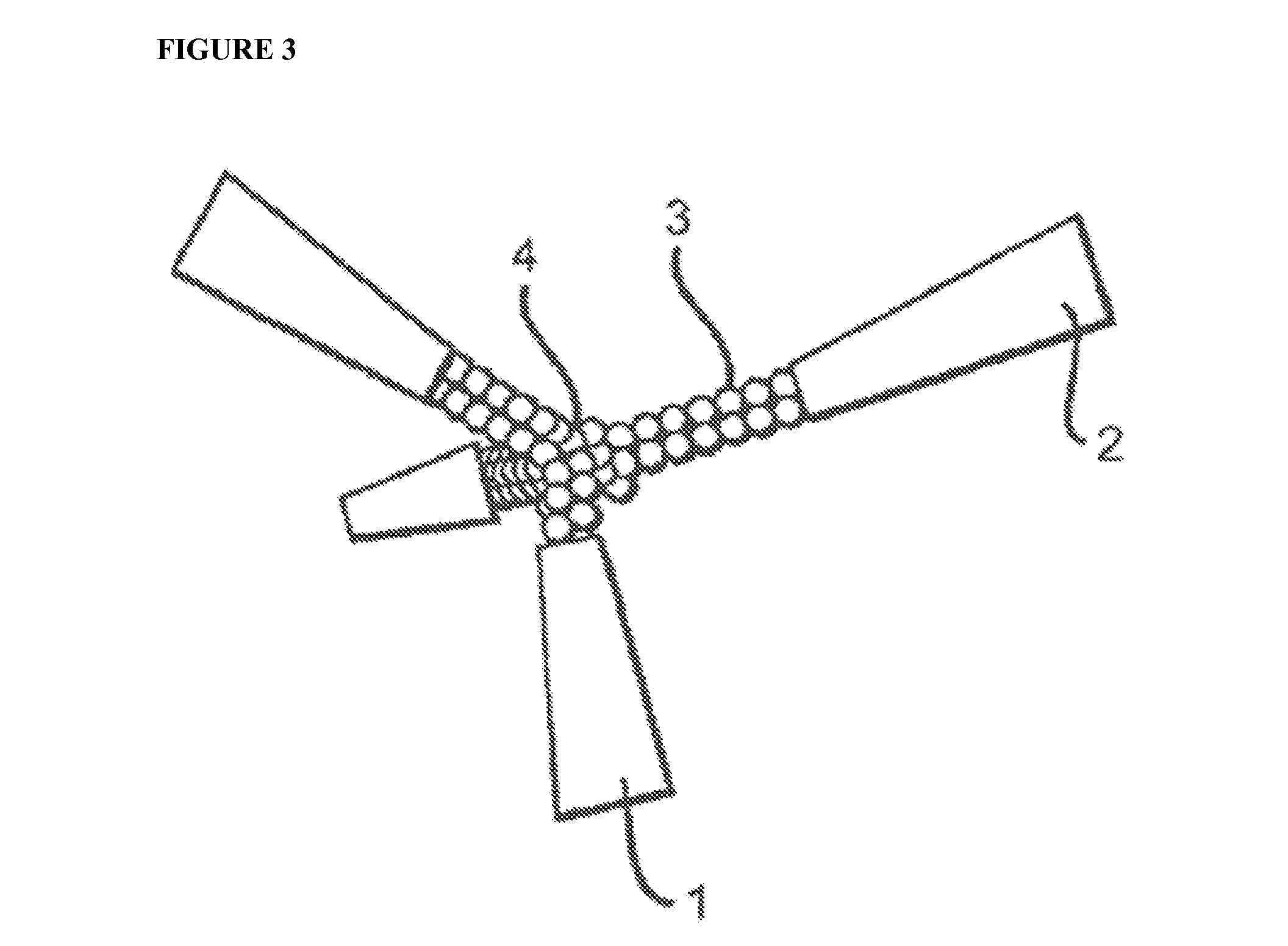Compositions and methods for modulating innate and adaptive immune systems
a technology of adaptive immune system and composition, applied in the field of therapeutic peptides, can solve the problems of inability to completely clear virus from infected individuals by current treatments, high cost of recombinant il's and ifn's, and high cost of production of recombinant ifn's and their application,
- Summary
- Abstract
- Description
- Claims
- Application Information
AI Technical Summary
Benefits of technology
Problems solved by technology
Method used
Image
Examples
Embodiment Construction
[0085]The present invention is directed to compositions and methods for activation and proliferation of B cells, DCs, NK cells, T cells and / or CD8+ cytotoxic T lymphocytes.
Peptidic Mimetics of Glycan Ligands of Receptors
[0086]An important component of immune system stimulation by the peptides is activation and proliferation of B cells, DCs, NK cells, T cells and CTL (cytotoxic T lymphocytes) in addition to activation of phagocytic cells. To this end, peptidic mimetics of the glycan 5-acetyl-neuraminic acid-galactose [Neu5Ac(α2-3)Gal and Neu5Ac(α2-6)Gal] were designed. These glycans bind to NKG2D, an important activating receptor on NK cells, γδ T cells and CD8+ cytotoxic T cells [12, 15], and to the family of siglecs (sialic acid-binding Ig-like lectin) receptors that is present on most cells of the immune system and are generally inhibitory receptors [12]. Whereas identified endogenous ligands of NKG2D are several protein-based activating ligands [10, 17], binding of glycans should...
PUM
| Property | Measurement | Unit |
|---|---|---|
| Ratio | aaaaa | aaaaa |
| Level | aaaaa | aaaaa |
| Cytotoxicity | aaaaa | aaaaa |
Abstract
Description
Claims
Application Information
 Login to View More
Login to View More - R&D
- Intellectual Property
- Life Sciences
- Materials
- Tech Scout
- Unparalleled Data Quality
- Higher Quality Content
- 60% Fewer Hallucinations
Browse by: Latest US Patents, China's latest patents, Technical Efficacy Thesaurus, Application Domain, Technology Topic, Popular Technical Reports.
© 2025 PatSnap. All rights reserved.Legal|Privacy policy|Modern Slavery Act Transparency Statement|Sitemap|About US| Contact US: help@patsnap.com



